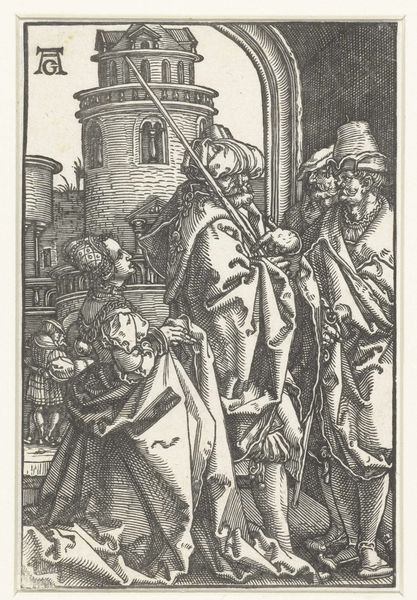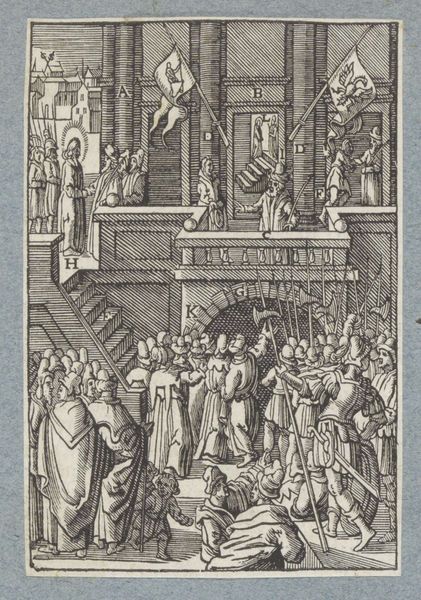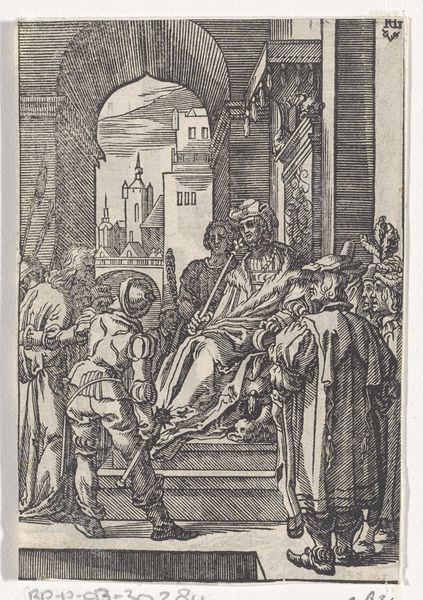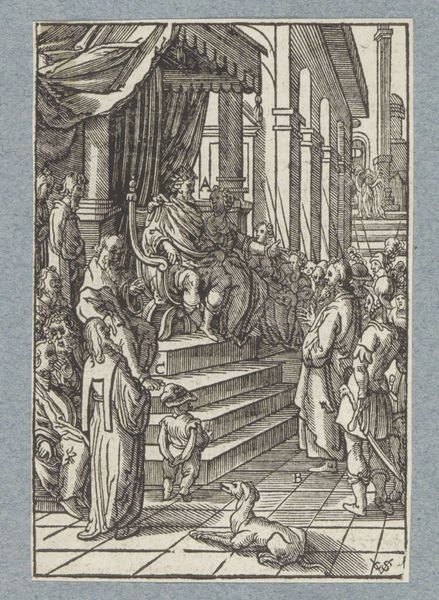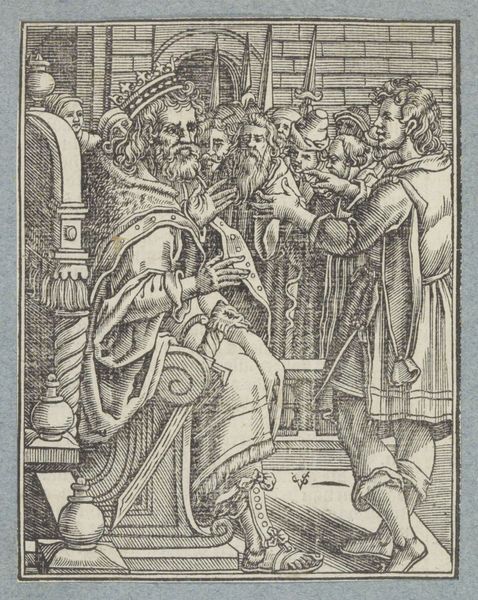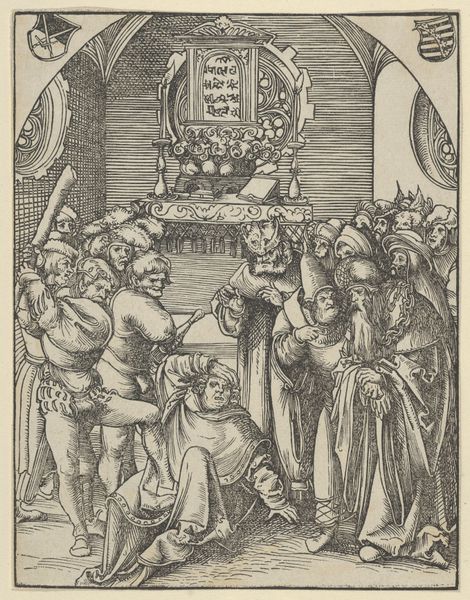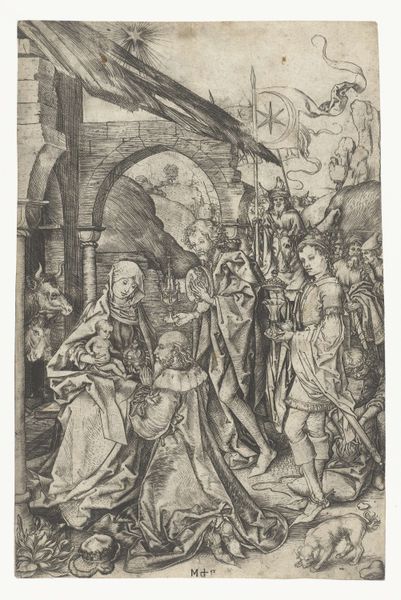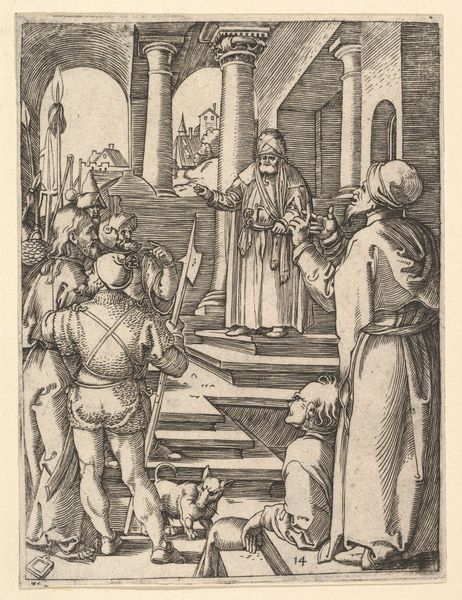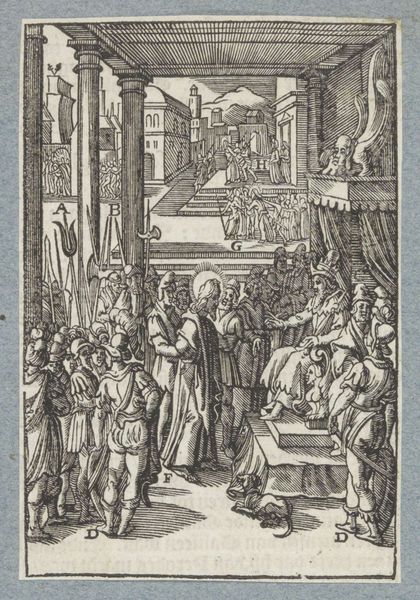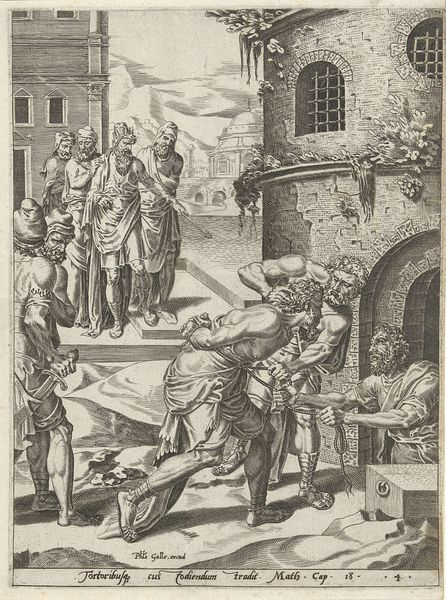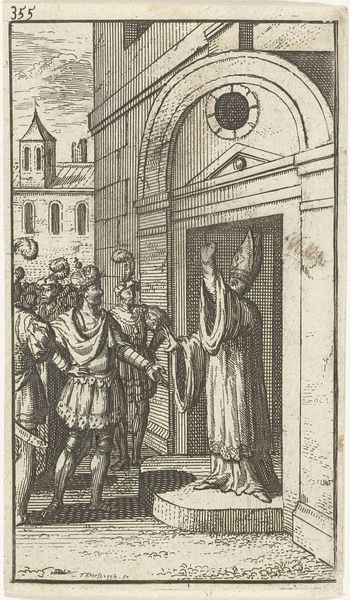
print, engraving
#
baroque
# print
#
figuration
#
line
#
history-painting
#
engraving
Dimensions: height 111 mm, width 74 mm
Copyright: Rijks Museum: Open Domain
Editor: This is "Christus aan het volk getoond (Ecce Homo)" or "Christ Shown to the People" by Christoffel van Sichem II, created between 1648 and 1657. It's an engraving, a type of print, housed in the Rijksmuseum. The intense hatching and crowded figures create a real sense of drama and turmoil. How does its historical context shape your understanding of this work? Curator: The power dynamics in this engraving are really striking. Consider how the architecture itself is used. Christ, and the ruling figures like Pontius Pilate, are elevated above the commoners, literally positioned in positions of dominance. But that depiction, and the political weight behind it, it isn't necessarily neutral, is it? Editor: No, it definitely isn't. There's almost a critique embedded within the depiction of that power structure. The crowd looks chaotic, manipulated. It's not a picture of simple, divinely ordained hierarchy. Curator: Exactly. And engravings like this, which were widely reproduced and disseminated, became a way to not just depict these Biblical scenes but to comment on contemporary social structures as well. Consider who was commissioning and consuming these prints – and what message were they hoping to convey? Were they about faith, politics, social commentary, or all three? Editor: That makes so much sense! I was so focused on the individual suffering of Christ, but seeing it as a commentary on broader power dynamics opens up a whole new way to look at it. Curator: And that’s the power of looking at art through its historical lens. It shows how artistic decisions reflect the cultural and political forces at play during their creation.
Comments
No comments
Be the first to comment and join the conversation on the ultimate creative platform.
